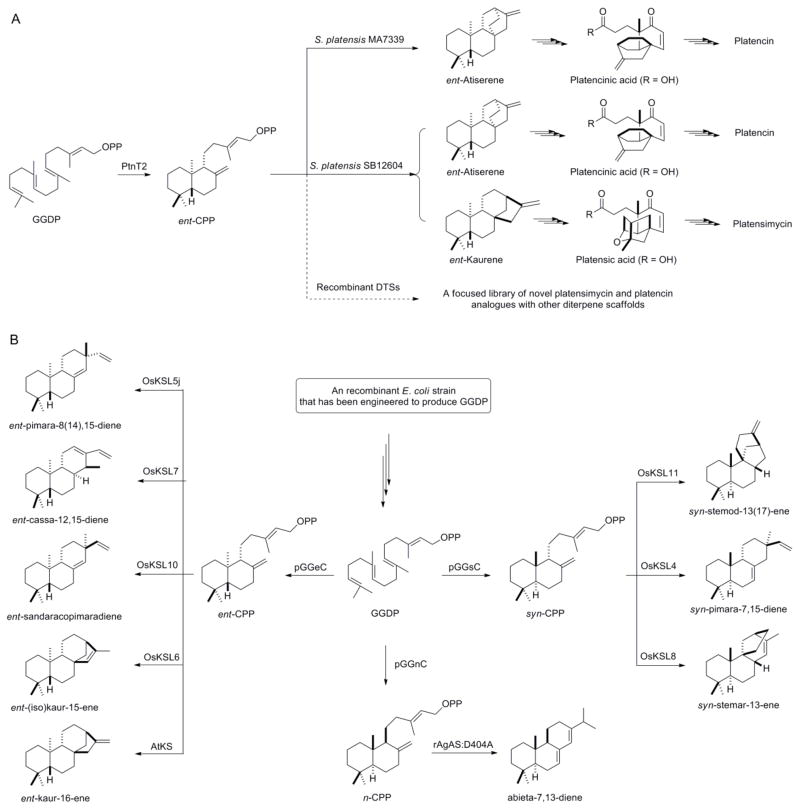Figure 4.
(A) Modularity of DTS biochemistry demonstrated by conversion of the platencin- producing strain, S. platensis MA7339, into a platensimycin and platencin dual-producing strain, S. platensis SB12604, by genetic engineering [43], and a proposal of producing new analogues by heterologous expression of additional type I DTSs in S. platensis MA7339. (B) Utility of DTS modularity demonstrated through expression of various type I and type II DTSs in a recombinant E. coli strain that has been engineered to produce GGDP to yield eight different diterpene scaffolds, which provide an entry point to engineered production of thousands of diterpenoid natural products. DTSs, diterpene synthases; ent-CPP, ent-copalyl diphosphate; n-CPP, normal-copalyl diphosphate; syn-CPP, syn-copalyl diphosphate; GGDP, geranylgeranyl diphosphate; pGGeC, pGGnC, and pGGsC, three engineered type II DTSs that convert GGDP to ent-CPP, n-CPP, and syn-CPP, respectively; AtKS, rAgAS:D404A, OsKSL4, OsKSL5j, OsKSL6, OsKSL7, OsKSL8, OsKSL10, and OsKSL11, 11 engineered type II DTSs that convert ent-CPP, n-CPP, or syn-CPP to the nine diterpenoid scaffolds, respectively [66].

